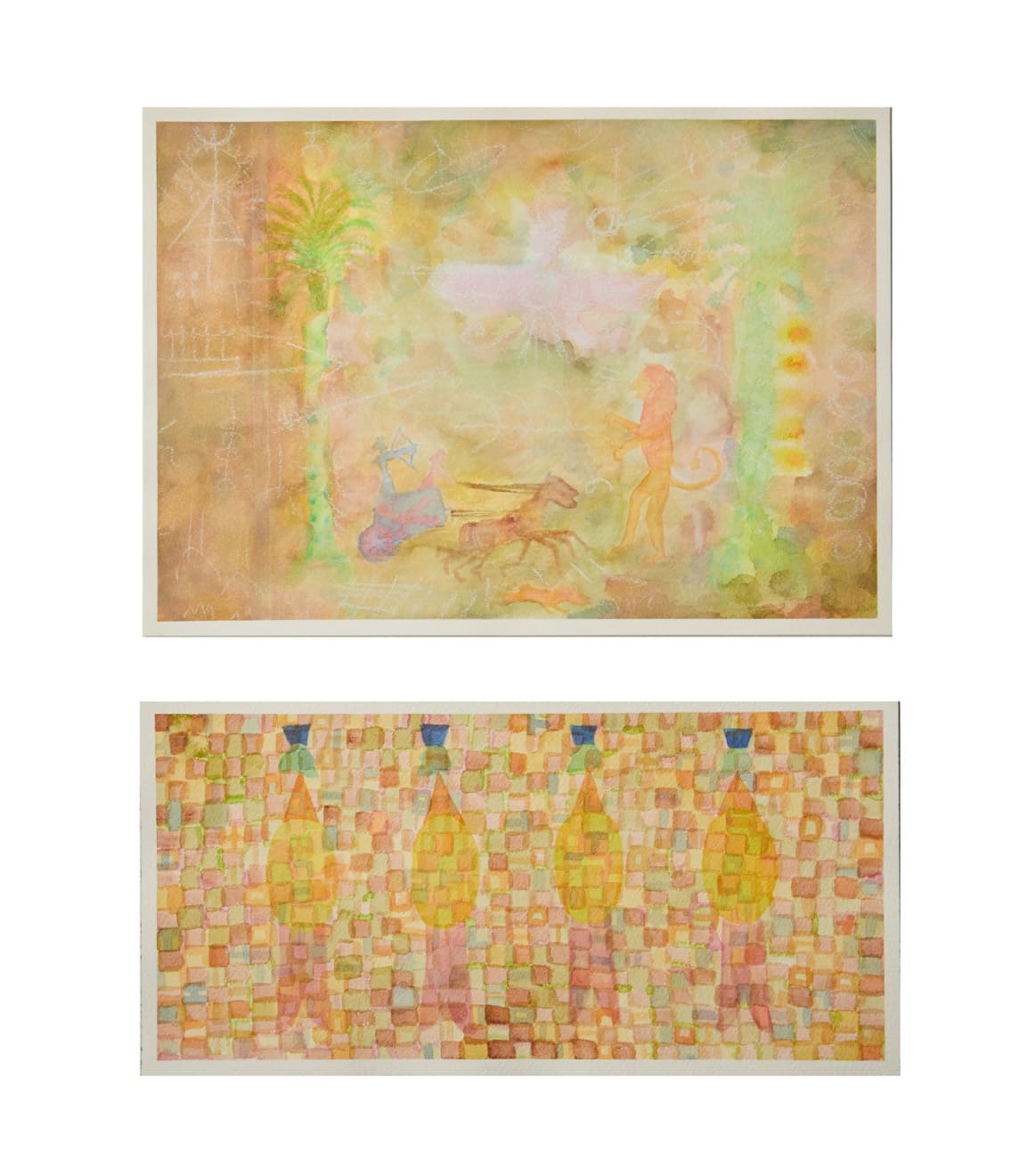-
Artworks
Areez Katki b. 1989
Seal, 2023Watercolour and chalk on Arches cotton paper
(HSN Code: 970110)Top: 11.69 x 8.26 inches
Bottom: 5.9 x 11.81 inches
DiptychCopyright Areez Katki, 2023This series of nine diptych works on paper are based on a reframing of archaeological material from the vantage point of the Parsi queer diaspora. The process began with an...This series of nine diptych works on paper are based on a reframing of archaeological material from the vantage point of the Parsi queer diaspora. The process began with an exploration of archives—beginning from a broad range—that contained artifacts from Achaemenid Persia, particularly those which were excavated by European archaeological teams from the 19th and early-20th centuries. Most of these objects were taken to Europe and several are still at the Musée du Louvre in Paris; some are from the Oxus Treasure, which is a large finding of gold and precious metal-based Achaemenid findings, which are still at the British Museum; and a select few artifacts and architectural motifs cited in this series are from the National Museum of Iran (Tehran) and the present-day ruins of Persepolis (located in the Fars province of present-day Iran), which was destroyed by Alexander of Macedon in 330 BC.
Over the past seven years Katki has closely studied what remains of Achaemenid art: alongside these studies he has practiced the queer art of fabulation, through cues provided in elements of tangible narrative that are traceable in Zoroastrian decorative motifs, domestic and ceremonial artifacts, and the structural plans of Persepolis which has been repeatedly visited by him since his first field trip there in 2018.
The larger top leaf of this diptych is based directly on the composition of the imperial seal of Darius the Great, which is currently held at the British Museum. In this imagined chromatic scene, there is no cuneiform text inscribed to the extreme left of this composition: instead, there’s a depth of chromatic layering and a muddy, inky quality that implies the once-used luster of the object—along with the chalk markings layered over a more animated chariot, rider, archer and lion in the scene, with the palm trees flanking them and a Faravahar icon looming above. The lower, smaller leaf in this diptych is pixelated and stylised depiction of Persian soldiers based on a carved frieze: the otherwise hermetic order of this composition, of four figures, is disrupted by one figure (left most) facing in a direction toward the others rather than in procession: implying an animated tension, a queer and dramatic release from the static nature of how one imagines the ancient Achaemenid military.
Join our mailing list
* denotes required fields
We will process the personal data you have supplied in accordance with our privacy policy (available on request). You can unsubscribe or change your preferences at any time by clicking the link in our emails.



